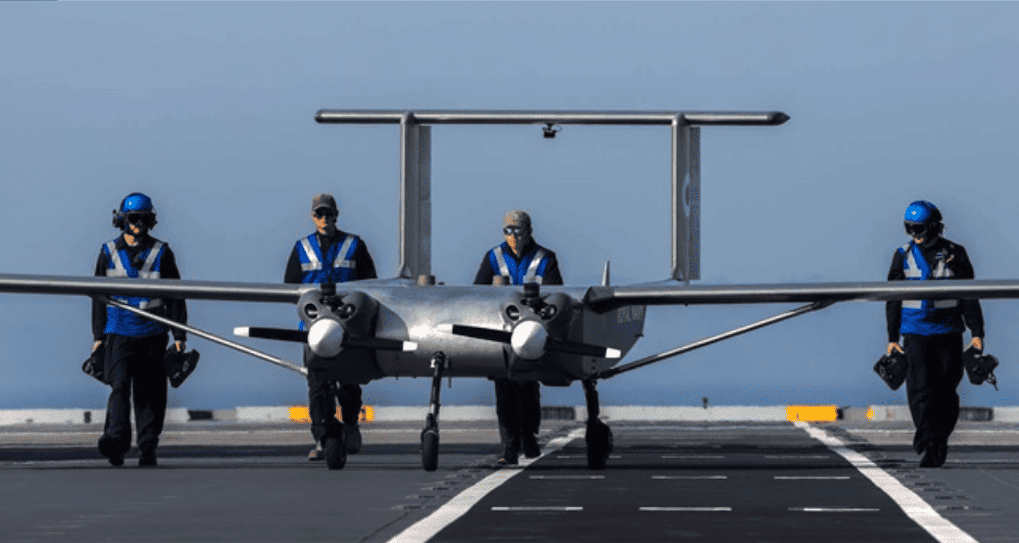
A pilotless plane has flown on and off a Royal Navy aircraft carrier for the first time.
The W Autonomous Systems (WAS) drone flew from the Lizard Peninsula to the deck of HMS Prince of Wales off the Cornish coast, delivered supplies, then flew back.
The Royal Navy (RN) joined forces with Southampton-based W Autonomous Systems, a firm which is developing long-range, heavy-lift autonomous drones for defense.
The drones incorporate an innovative autopilot system, eliminating the need to be controlled remotely by trained pilots, and are designed to operate in the most challenging environments.
Its HCMC twin-engine light alloy twin boom aircraft is capable of carrying a payload of 100kg up to 1,000 kilometers (620 miles). Crucially, it can land on uneven ground and needs a runway just 150 meters (492 feet) long – a little over half the length of the flight decks on the UK’s Queen Elizabeth-class aircraft carriers – to land or take off.
This flight is a vital step along the way to operating crewless aircraft safely alongside F-35 Lightning jets and naval Merlin and Wildcat helicopters which are currently the backbone of the Fleet Air Arm.
The goal is to deploy drones with a UK Carrier Strike Group in the future, using them to transfer stores and supplies – such as mail or spare parts – between ships, without launching helicopters.
Drones are cheaper to operate, eliminate any potential risk to aircrew, such as in bad weather, and keep the hi-tech Merlins and Wildcats free for operational sorties, such as hunting hostile submarines or surface vessels which threaten the carrier strike group.
HMS Prince of Wales has experimented with drone technology before, notably small quadcopters and Banshee targets, which are small jets launched by catapult that parachute down to land when the mission is complete.
The trials off the Lizard involve a much larger (ten-meter wingspan), more capable pilotless aircraft.
After extensive preparations ashore by the combined RN and WAS trials team, and attaining endorsements and authorisations from the Civil Aviation Authority, the HCMC drone took off from Predannack, the satellite airfield of RNAS Culdrose, and after a flight of about 20 minutes, touched down safely on the HMS Prince of Wales’ deck.
Once its symbolic payload of naval memorabilia was removed by crew, the aircraft was turned around and it was re-launched back to Predannack.
HMS Prince of Wales will be operating off the Eastern Seaboard of the USA until Christmas as she conducts experiments with F-35 Lightning stealth fighters, MV-Osprey tilt-rotors, and the Mojave drone.
Captain Richard Hewitt, Commanding Officer HMS Prince of Wales, said: “HMS Prince of Wales is a fifth-generation aircraft carrier and operating autonomous drones like this will become the norm across future Royal Navy Carrier Strike Groups in our 50-year lifespan. We are all proud here in HMS Prince of Wales to achieve this – a fantastic milestone for all involved and the first of many firsts on this deployment to shape the future of Royal Naval Carrier Strike innovation as we prepare for our strike group deployment in 2025.”
Charles Scales, Co-Founder of W Autonomous Systems, added: “Landing on a moving naval carrier was the ultimate test and our autonomous heavy-lift HCMC drone passed with flying colors.” The trials off Cornwall were the first stage of an autumn programme pushing the boundaries of naval aviation for Britain’s biggest warship.
Find military UAS manufacturers & suppliers Unmanned Aerial Systems for defense >>












